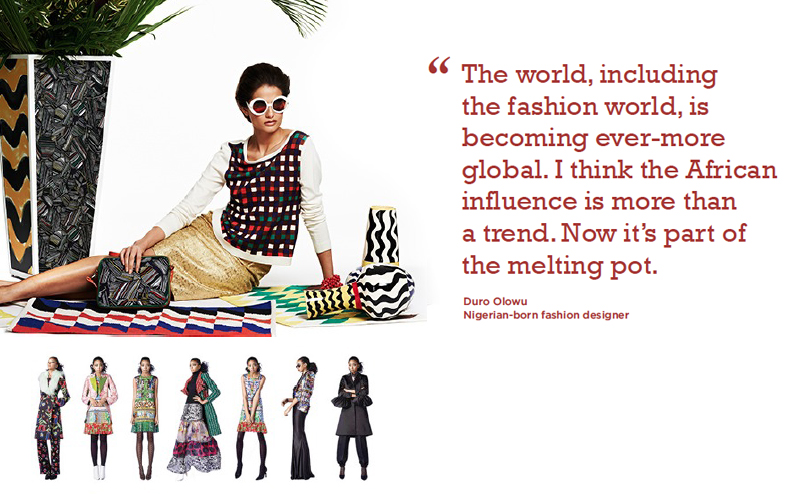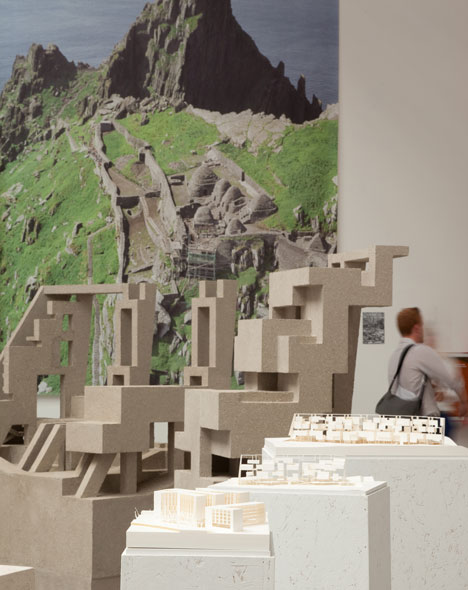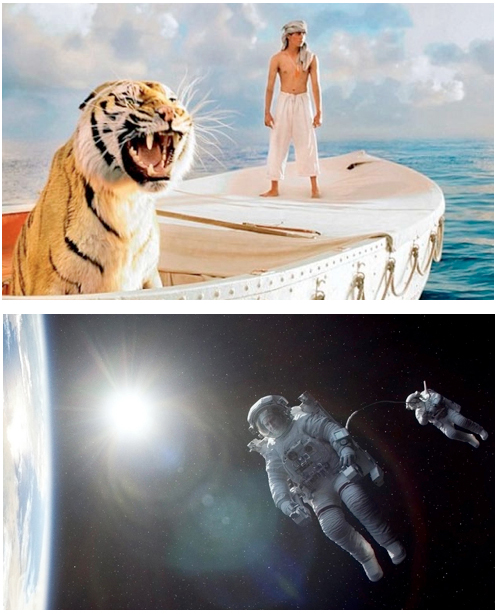Increased global connection and collaboration has led to the blending of cultural values. In the West, there are new examples of the importance of an individual’s contribution to community despite the West being a culture that’s traditionally driven by the pursuit of individual success. In the East, societies with a long-held focus on community (from the nuclear family to the citizens of a nation) are now placing more value on the unique contributions of individuals.
Consumers are able to look to any culture in any part of the world and adopt any part of its philosophies as their own, literally picking and choosing what is best for them.
Why is this important?
Thanks to technology and new media, people have exposure to cultures other than their own to draw from, learn from and feel connected to. Now able to confidently blend cultures, consumers continually create or recreate, adopt or alter the philosophies, beliefs and practices of any given culture in the world, based on what best suits their needs at any given moment, for any situation.The desire to dabble has grown and we’re witnessing a much more fluid consumer who is willing to look outside their own borders to find entertainment, creativity and ways to express themselves.
The most important takeaway we see coming out of the Cultural Blending movement is a consumer shift from Global Citizen to Global Explorer. Global Citizens observe and visit other cultures out of interest and personal enjoyment. They watch, learn and listen – but always maintain their own cultural sensibilities. The emerging Global Explorers are actively pursuing, adopting and blending the philosophies, beliefs and practices of new cultures as a way to discover and create their own unique experiences.
Here are a few examples that we have come across that bring to life the Cultural Blending Movement and showcase the shift towards a Global Explorer:
EMBRACING MUSIC WITH DISPARATE ROOTS

Thanks to technology, consumers all over the world have exposure to the talents of music and musicians that would not have normally “made it”. From top selling Colombian artist, Shakira, to the mainstreaming of electronic music genre Dubstep from the UK, to the popularity of South African band Die Antwoord, consumers are adopting the music of other cultures and making it a part of the mainstream global culture of today. The explosive success of Korean pop sensation PSY demonstrates not only the willingness of the Majority World to embrace music that originates from a culture other than their own, but the absolute power of the individual to adopt cultures and blend them to create his or her own identity.
MERGING CULTURAL CUES WITH FAST FASHION

Consumers have the confidence to adopt the visual cues of a particular culture as part of their own fashion, despite where they live in the world. JC Penny chose to do their first designer collaboration with fashion designer Duro Olowu.
BLENDING BORDERS THROUGH ARCHITECTURE
 The field of architecture has historically pulled from the cultures it exists within. Over time, the cultivation of an aesthetic standard for “African”, “Spanish”, and “Roman” architecture emerged. As technology and new media have emerged, the vast physical distances and cultural and geographical boundaries that once separated regions have begun to fade. Architecture has become one of the many fields pulling from the new and growing pool of cultural resources, as architects and designers continue to incorporate other “outside influences” into their work.
The field of architecture has historically pulled from the cultures it exists within. Over time, the cultivation of an aesthetic standard for “African”, “Spanish”, and “Roman” architecture emerged. As technology and new media have emerged, the vast physical distances and cultural and geographical boundaries that once separated regions have begun to fade. Architecture has become one of the many fields pulling from the new and growing pool of cultural resources, as architects and designers continue to incorporate other “outside influences” into their work.
One example of this cultural blending in architecture is seen in the work of Grafton Architects, a firm based in Dublin, Ireland who teamed up with Brazilian architect Mendes da Rocha in last year’s Venice Architecture Biennial. Together they created an interpretive design piece that took inspiration from both cultures to envision a new aesthetic, which represented a fusion of cultures and places.
MIXING MEDICAL AND SPIRITUAL TRADITIONS
 Though the ancient practice of Yoga originated in India, its popularity has spread across the globe. The map above from the Marshall Index demonstrates where the term “yoga” was most frequently used last year. Although this is not a new trend, yoga and other practices like acupuncture and meditation continue to spread and are no longer limited to Eastern cultures. Instead, these philosophies are continuing to permeate the daily practices of consumers all over the world, even making their way into non-traditional arenas like hotels and airports.
Though the ancient practice of Yoga originated in India, its popularity has spread across the globe. The map above from the Marshall Index demonstrates where the term “yoga” was most frequently used last year. Although this is not a new trend, yoga and other practices like acupuncture and meditation continue to spread and are no longer limited to Eastern cultures. Instead, these philosophies are continuing to permeate the daily practices of consumers all over the world, even making their way into non-traditional arenas like hotels and airports.
As cultures blend, consumers are becoming more likely to stray from the traditional practices of their own societies and dabble in the rituals of others. This mélange of traditions is also fueling creativity, leading to the development of new takes on old practices, like anti-gravity yoga, enabling consumers to confidently blaze trails into non-traditional territory.
TELLING STORIES FROM ANY PERSPECTIVE
 The critically acclaimed film Life of Pi received 11 Oscar nominations, reaffirming that it tells a uniquestory. Also unique is the story behind Life of Pi. The book and film tell a vivid tale of an Indian boy from Pondicherry who survives a shipwreck and is stranded at sea with a Bengal Tiger. The details of this boy’s life feel so vivid, readers likely assumed the author was well versed in Indian culture. However, Life of Pi was written by Canadian author Yann Martel, whose first language is French. Martel is so confident in his storytelling, he creates a tale that taps into the universality of mankind, making an Indian boy’s journey completely relatable to anyone in any culture. Tasked with the difficult challenge to translate this story to film was Taiwanese director Ang Lee. A Canadian author telling the story of an Indian boy, brought to life on the big screen by a Taiwanese director, Life of Pi is an example of the power of blended cultures to give creative minds the confidence to tell unique and true-to-life stories from any perspective.
The critically acclaimed film Life of Pi received 11 Oscar nominations, reaffirming that it tells a uniquestory. Also unique is the story behind Life of Pi. The book and film tell a vivid tale of an Indian boy from Pondicherry who survives a shipwreck and is stranded at sea with a Bengal Tiger. The details of this boy’s life feel so vivid, readers likely assumed the author was well versed in Indian culture. However, Life of Pi was written by Canadian author Yann Martel, whose first language is French. Martel is so confident in his storytelling, he creates a tale that taps into the universality of mankind, making an Indian boy’s journey completely relatable to anyone in any culture. Tasked with the difficult challenge to translate this story to film was Taiwanese director Ang Lee. A Canadian author telling the story of an Indian boy, brought to life on the big screen by a Taiwanese director, Life of Pi is an example of the power of blended cultures to give creative minds the confidence to tell unique and true-to-life stories from any perspective.
Even more recently, the film Gravity gives us a perspective from beyond the planet, extending our familiarity and feeling of “home” to new heights. The Global Explorer is now going beyond the globe.
FOCUSING ON PERSONAL ASPIRATION
 The American Dream as a concept has been alive and well in the United States since the term was first coined in the 1930s. As the global economy continues to grow and change, however, the American Dream is expanding well beyond its original borders. Countries with traditions of self-sacrifice are now experiencing a newfound wealth that enables frivolous spending, shifting the focus from “we” to “me”.
The American Dream as a concept has been alive and well in the United States since the term was first coined in the 1930s. As the global economy continues to grow and change, however, the American Dream is expanding well beyond its original borders. Countries with traditions of self-sacrifice are now experiencing a newfound wealth that enables frivolous spending, shifting the focus from “we” to “me”.
With a powerful middle class continuing to emerge in China, The Boston Consulting group asserts that the country is “poised to become the world’s biggest personal luxury market by the year 2020.”(Harvard Business Review) The new luxury market in China is confidently leaving behind socialist traditions and adopting Western attitudes of personal fulfillment through conspicuous consumption.
The American Dream is no longer solely American. A new version of The American Dream is emerging in China as individual expression and personal freedoms move to the forefront of consumerism.
What do think of the cultural blending movement and the emerging Global Explorer?